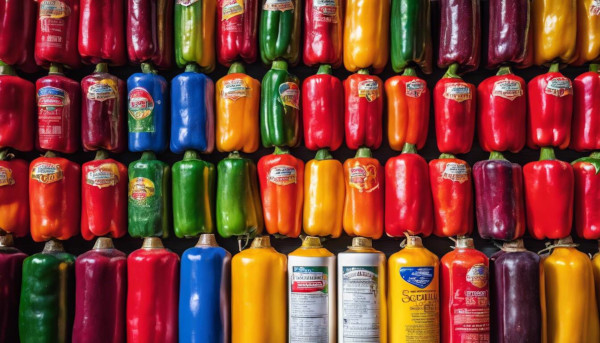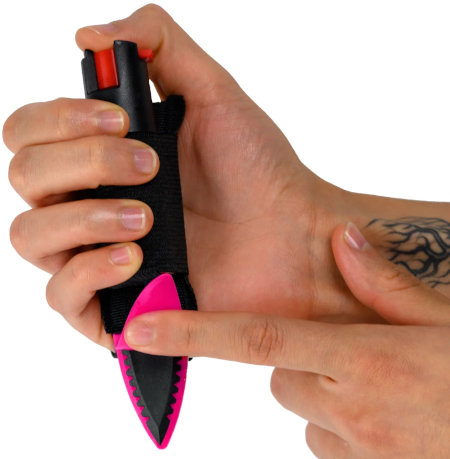Pepper Spray Scoville

Personal safety is a priority, and pepper spray is a powerful, non-lethal tool for self-defense. But how do you choose the right one? The Scoville scale measures heat potency, originally used for chili peppers, and is now a key factor in determining pepper spray strength. Understanding this scale helps you choose the most effective spray for protection.
Most pepper sprays range from 500,000 to 2 million SHU (Scoville Heat Units)—far hotter than common peppers like jalapenos. A higher SHU rating generally means greater potency and stopping power.
Understanding Pepper Spray Scoville Ratings
The Scoville scale measures the concentration of capsaicin, the active ingredient in peppers responsible for their heat. In pepper spray, capsaicin causes temporary blindness, breathing difficulties, and intense burning, making it an effective self-defense tool.
For a full guide on choosing the best spray, check out our Pepper Spray Guide
How Hot is Pepper Spray?
| Pepper Type | Scoville Heat Units (SHU) |
|---|---|
| Jalapeno | 2,500 - 8,000 |
| Habanero | 200,000 - 350,000 |
| Carolina Reaper | 1.5 million+ |
| Pepper Spray | 500,000 - 2 million+ |
For comparison, Wildfire pepper spray has an SHU rating of 2 million, making it 250x stronger than jalapenos.
The Science behind Scoville Heat Units
Developed by Wilbur Scoville in 1912, the Scoville Organoleptic Test originally measured heat by diluting capsaicin until it became undetectable. Today, high-performance liquid chromatography (HPLC) is used for more precise heat level measurements.

Popular Pepper Sprays & Their Scoville Ratings
| Brand | Scoville Rating (SHU) | Features |
| Fox Labs 5.3M | 5.3 million | Most potent option |
| Pepper Shot | 2 million | 8.5% OC concentration |
| Mace Triple Action | 2 million | Flip-top trigger for safety |
| Wildfire | 2 million | Strong concentration for quick effects |
When choosing pepper spray, SHU is important, but spray pattern and range also matter. Stream sprays work best outdoors, while cone sprays provide wider coverage.
Suppose you're looking for something compact and convenient, Streetwise's Strike-n-Spray product provides two functions - a pain-inducing self-defense spray and a self-defense weapon - designed with police-grade oleoresin capsicum (OC) pepper formula for maximum stopping power.
Dual Function Spray and Blade for Protection
Effectiveness as a Self-Defense Tool
Key Considerations
-
Potency: Look for at least 1 million SHU for reliable stopping power.
-
Spray Pattern: Mist sprays cover a wide area, while streams are more accurate.
-
Range: Longer spray range (6-10 feet) keeps attackers at a safe distance.
-
Legality: Always check local laws regarding pepper spray use.
Comparing Pepper Spray Heat to Common Spices
To understand how strong pepper spray is, here’s how it compares to everyday spicy foods:
| Item | Scoville Heat Units (SHU) |
| Frank’s RedHot | 450 - 900 |
| Sriracha | 2,200 |
| Tabasco | 50,000 |
| Carolina Reaper | 1.5 million+ |
| Pepper Spray | 500,000 - 5.3 million+ |
With ratings surpassing the world’s hottest peppers, pepper spray is one of the most effective non-lethal self-defense options available.
Safety & Proper Usage
Pepper Spray Effective Use
-
Aim for the face, especially eyes and nose.
-
Use short bursts to avoid running out too quickly.
-
Move away immediately after spraying an attacker.
-
Store in an accessible but safe place.
Potential Side Effects
-
Causes temporary blindness, difficulty breathing, and skin irritation.
-
Effects last 30-45 minutes, giving time to escape.
-
Can be dangerous in enclosed spaces due to air contamination.
Final Thoughts: Choosing the Right Pepper Spray
When selecting a pepper spray, focus on Scoville rating, spray pattern, and legality. High SHU sprays provide more stopping power, but range and usability matter too.
Choose the right pepper spray with confidence. Whether you need maximum SHU or a compact option, explore the best self-defense sprays today.With the right pepper spray, you can stay prepared and protected in any situation.
Add your comment now!
Post CommentRecent posts
-
03/12/2025Best Stun Guns for Self-Defense in 2025
-
03/11/2025How to Prevent Kidnapping – Top Safety Tips
-
03/11/2025What Do Rapists Look For? 10 Red Flags to Avoid

